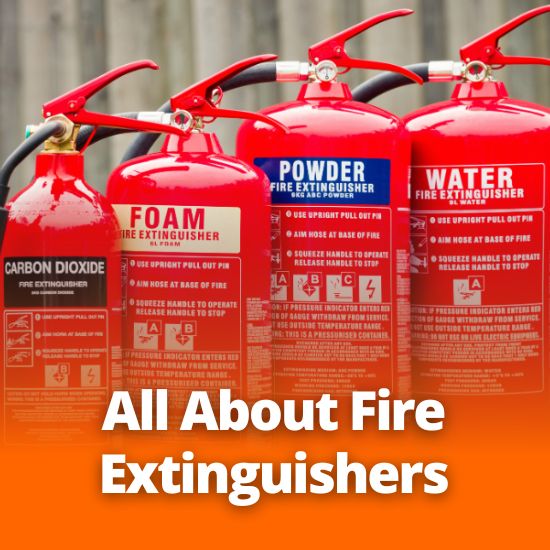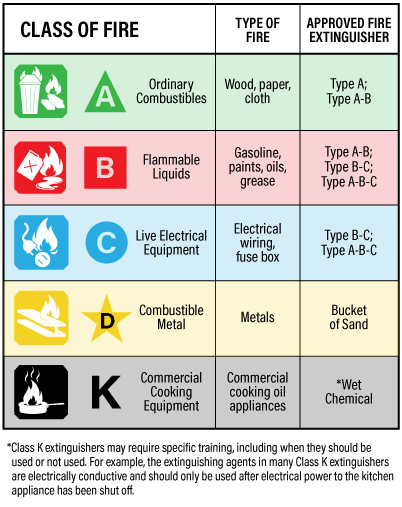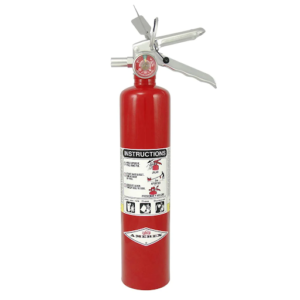
All About Fire Extinguishers
When planning a safe trip you consider a lot: allergy meds, bandages, sunscreen. We’ve talked about campfire safety and another crucial item to have on hand is a fire extinguisher. So, here’s some info to help you find the best one for you.
But first how many fire extinguishers do you actually need?
The answer: yes.
The number depends on the square footage of your RV, because you want to have one handy immediately in case of a fire anywhere, and not have a mad scramble. Most expert opinions agree that you should have at least 1 extinguisher in the following areas: bedroom(s), kitchen, and outside (with outside being well-labeled and easily accessed, so not pushed into the recesses of your pass-thru storage.
Extinguisher Types
Fire extinguishers are divided into 5 Classes:
These classes differ by country, here we are discussing how Canada divides fire types.
Class A: Fire caused by ordinary combustibles like paper, cloth, wood, rubber and some plastics. These are basic fires that are easily put out by a Class A extinguisher, most of which use a fine powder to douse the flames.
Science! This powder is often monoammonium phosphate and ammonium sulfate, which smother the oxygen feeding a fire so don’t breathe it in! Use gloves and wear a mask when cleaning up the residue after as it can cause breathing difficulties.
Class B: Fire caused by flammable liquids, gasses, oil, paints, or lacquer (but not cooking oil or grease). These are fires best extinguished by smothering; many Class B extinguishers are combined with Class C.
Class C: These are (live) electrical fires involving equipment like motors, appliances, or power tools. These are fires that cannot be put out with water (remember, water conducts electricity which is why it’s not advisable to bathe with a toaster).
Class D: Fire caused by combustible metals such as magnesium, titanium, sodium, and potassium.
Class K: Fires involving combustible cooking oils, or fats in cooking appliances.
Do not use water to extinguish flammable liquid or cooking oil fires. Water helps to spread the liquid and the fire.

Comparing Extinguisher Types:
Extinguisher | Class | Range | Empties | Other |
Water | A | Long | 60 sec | Fights reignition |
CO2 | B, C | Short | 10-20 sec | May make breathing difficult in enclosed areas |
Dry Chemical | B, C, ~A | Moderate | 10-25 sec | Leaves residue, may make breathing difficult in enclosed areas |
Liquid Gas | B,C, ~A | Short | 10 sec | May make breathing difficult in enclosed areas |
Chemical Foam | A, B | Moderate | 10-30 sec | Leaves residue |
Bucket of Sand/Dry Powder | D | |||
Wet Chemical | K | Prevent reignition |
(Table from CCOHS)
A couple commercial options on the market are:
AMEREX B417T
- 10 second discharge
- Multi-use, ABC rated

First Alert Extinguishers
- Comes in a variety of sizes and ratings
- Often rechargeable
- Affordable

H3R Performance Extinguishers
- Multiple sizes
- Halguard Clean Agent: uses a non-corrosive agent that will not damage metal
- More expensive than standard extinguisher

When shopping for a fire extinguisher, consider the locations you’ll be placing them, the types of fire per location and how you can mount or store it. Always learn how each operates before you might need it, and regularly check for corrosion or damage.